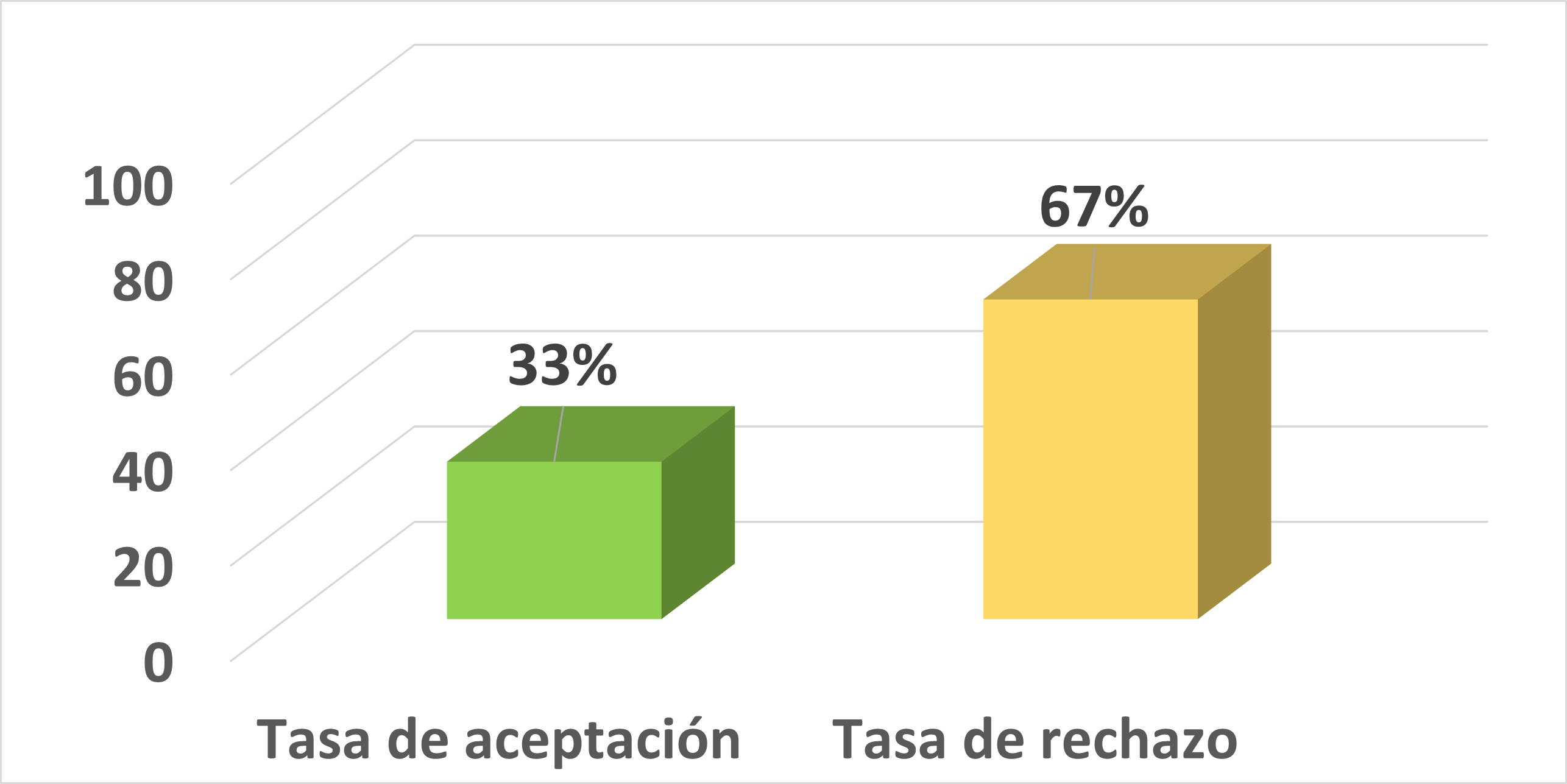Protective antibody titers against rubella in adolescents in urban and rural schools in the city of Loja
Keywords:
Rubella, Congenital Rubella Syndrome, ELISAAbstract
Rubella is a contagious infectious disease caused by the togavirus belonging to the genus Rubivirus. It is a benign disease, with more severe effects on the fetus during the first trimester of pregnancy. About 90 % are immunoglobulin G antibody titers protective in vaccinated populations, but these titles in adolescents who received the vaccine, the program had not been implemented in our country, are unknown hence the research question posed it was ¿What are the titles of IgG anti-rubella protectors in the students of CPEE and CNV, aged between 16 and 18, the same as its performance is justi ed, because adolescents without protective antibody titers, infectious foci are women of reproductive age and more severe in infancy, with consequences for the fetus. The objective was to determine the protective antibody titers in adolescents of both sexes, two urban schools (CEED) and rural (CNV). The methodology being descriptive, cross-sectional study was the application of a survey, training through lectures, delivery of material with basic information and easy to understand, venous blood for determination of antibody titers IgG anti protectors rubella. The remarkable nding is positivity protective antibody titers in IgG anti- rubella adolescents of CPEE and CNV is 82,47 % and 17,53 % negativity, this latter gure we are concerned by the risk of disease rubella.References
Behrman, Kliegman, Jenson (2010): Nelson Tratado de Pediatría, 17a.ed., Madrid, ELSEVIER, pág. 1032-1034
Brooks, G.t. y Col. (2013): Microbiología Médica de Jawetz, Melnick y Adelber, 25va. Ed., México, Manual Moderno, Pág. 402
Edlich Rf, Winters Kl, Long Wb, Gubler Kd (2005). «Rubella and congenital rubella (German measles).». J Long Term Eff Med Implants 15 (3): pp. 319–28. PMID 16022642
Gil, M.a. y Col. (1997): Seroprevalencia de anticuerpos, frente a sarampión, rubéola, parotiditis y varicela en escolares madrileños.
Haussner, S.A. (2001): estudio descriptivo realizado en las clínicas familiares del programa de medicina familiar de la Facultad de Ciencias Médicas durante los meses marzo y abril del 2001, tesis previa a la obtención del título de Médica Cirujana, Guatemala.
Prevalencia (2010) de anticuerpos anti- rubéola en un grupo de mujeres de la ciudad de México, Revista Médica del Hospital General de México, Vol. 1. No. 1.
Rojas, W.M. (2010): Inmunología, 15va. ed., Colombia, Corporación para Investigaciones Biológicas, pág. 89-90
Rozman, C. (2011: Compendio de Medicina Interna, Harcourt Brace, Barcelona, pág. 802
Siegel M, Fuerst Ht, Guinee Vf (2011). «Epidemiología y embriopatía de la rubeola. Resultados de un estudio prospectivo de larga duración». Am. J. Dis. Child. 121 (6): pp. 469–73. PMID 5581012.
Suarez-Ognio, Luis et al., (2007): A rubella serosurvey in postpartum women in the three regions of Peru. Rev Panam Salud Publica [online]. V 22, No. 2 [cited 2009- 03-17], pp. 110-117. Available from: [1]. ISSN 1020-4989. doi: 10.1590/S1020- 49892007000700005.
Vargas, M. E. y Col. (2006): Seroepidemiología de la rubéola y el sarampión en 5 regiones de Guatemala: Evidencia para la plani cación de la campaña SR 2006 en adultos, Programa Nacional de Inmunización_ MSPAS, Universidad del Valle y Johns- Hopkins, Laboratorio Nacional de Salud, OPS/OMS.
Pedranti, M.S. (2007): Prevalencia de anticuerpos anti-rubéola y anti-parvovirus B19 en embarazadas de la ciudad de Córdova y en mujeres en edad fértil de la ciudad de villa mercedes, san Luis, Revista Argentina de Microbiología, Vol. 39, No. 1.
Saldaña, J.i. y Col.(2004): Concentración de anticuerpos en adolescentes, Revista de la Facultad de Medicina de la UNAM, Vol.47, No.6.
Downloads
Published
How to Cite
Issue
Section
License
Those authors who have publications with this journal, accept the following terms:
- After the scientific article is accepted for publication, the author agrees to transfer the rights of the first publication to the CEDAMAZ Journal, but the authors retain the copyright. The total or partial reproduction of the published texts is allowed as long as it is not for profit. When the total or partial reproduction of scientific articles accepted and published in the CEDAMAZ Journal is carried out, the complete source and the electronic address of the publication must be cited.
- Scientific articles accepted and published in the CEDAMAZ journal may be deposited by the authors in their entirety in any repository without commercial purposes.
- Authors should not distribute accepted scientific articles that have not yet been officially published by CEDAMAZ. Failure to comply with this rule will result in the rejection of the scientific article.
- The publication of your work will be simultaneously subject to the Attribution-NonCommercial-NoDerivatives 4.0 International (CC BY-NC-ND 4.0)









